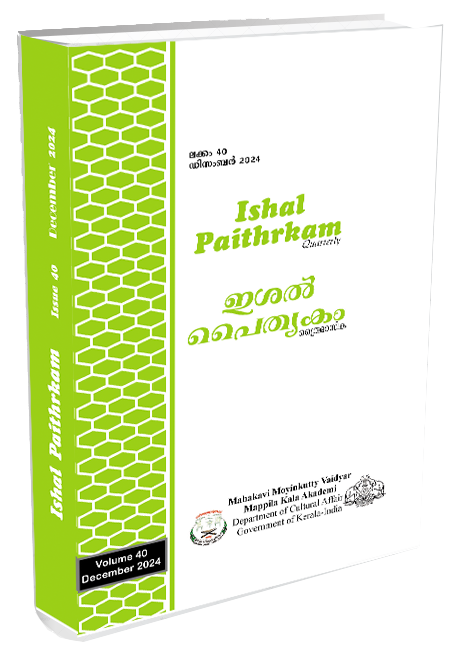Decoding the Edible Ecriture: A Barthesian Reading on Select Culinary Crime Narratives
Keywords:
Mystery Fiction , Culinary Crime Fiction, Food, Five Code theory, BarthesAbstract
Food is a subject of multifaceted discussion, often uncovering diverse food-related concepts. Among these is Culinary Mystery Narratives, a relatively new subgenre growing in popularity among international readers. This subgenre's appeal stems from its whodunit or enigmatic structure, where food functions as both a narrative and meta-narrative device, captivating readers through its layered storytelling. This paper delves into the concept of food as a code, metaphor, and narrative tool in two short stories, “Foodies” and “Creampuff,” from Rob Hart's Take-Out: And Other Tales of Culinary Crime. The collection presents a delicious range of stories, rich with cultural diversity and culinary metaphors woven into mysterious frameworks. The focus of this study is Hart’s skillful intertwining of mystery and culinary narratives. To analyze these elements, Barthes' five code theory—proairetic, hermeneutical, semantic, symbolic, and cultural—is employed. Through this theoretical lens, the study decodes the mysteries within these narratives, revealing how Hart transforms food into a multifaceted narrative device. This unique approach underscores the intricate relationship between food and mystery in culinary crime fiction, showcasing how culinary elements contribute to the genre's narrative depth. The paper applies Barthesian theory to reveal new insights into the structural and narrative dynamics of culinary mystery fiction.
Downloads
References
Barry, P. (2020). Beginning theory: An introduction to literary and cultural theory (4th ed.). Manchester University Press.
Barthes, R. (1974). s/z (R. Miller, Trans.). Hill and Wang.
Calamela, A. (2019, January 23). Book review: Take-Out: And Other Tales of Culinary Crime by Rob Hart. Criminal Element. https://www.criminalelement.com/book-review-take-out-by-rob-hart/
Danyte, & Milda. (2011). Introduction to the Analysis of Crime Fiction: A User-friendly Guide. Kaunas: Vytautas Magnus University.
Hart, R. (2019). Foodies and Creampuff. Takeout and Other Tales of Culinary Crime (pp. 21–44). Polis Books.
Henriksson, Å. (n.d.). The Reader Strikes Back: A Narratological Approach to Paul Auster’s The New York Trilogy [Master’s thesis, Goteborgs Universitet]. gupea.ub.gu.se. https://gupea.ub.gu.se/bitstream/handle/2077/37157/gupea_2077_37157_1.pdf?sequence=1
Rzepka, C. J. (2005). Detective Fiction. Polity Press.
Soler, N. P., & Torres Zúñiga, L. (2012). Food and Taste in Detective Stories. In M.L. Danobeitia(Ed.), Into Another’s Skin: Selected Essays in Honour of Maria Luisa Danobeitia (pp. 119–130). Editorial Universidad De Granada. https://www.researchgate.net/profile/Laura-Torres-Zuniga/publication/340721048_INTO_ANOTHER'S_SKIN_-_SELECTED_ESSAYS_IN_HONOUR_OF_MARIA_LUISA_DANOBEITIA/links/5e9a14d94585150839e40195/INTO-ANOTHERS-SKIN-SELECTED-ESSAYS-IN-HONOUR-OF-MARIA-LUISA-DANOBEITIA.pdf.
Downloads
Published
Issue
Section
License
Copyright (c) 2025 ISHAL PAITHRKAM

This work is licensed under a Creative Commons Attribution-NoDerivatives 4.0 International License.

